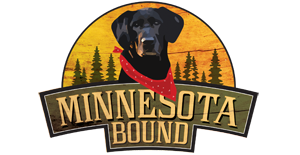What on earth are those baby eaglets eating? It sure does look gross and unappetizing, but to those eaglets it is like a gourmet meal.
Bald Eagles are a Fish or Sea Eagle so a big portion of their diet is going to end up being fish. That is why many of these birds are nesting or have a territory near some type of body of water. But these birds are really great at conserving the most energy possible. We really like to call them opportunistic hunters, which means they like to get the easiest meals possible. This can mean they will eat already dead or catch already injured prey. These are raptors though and would have no problem taking live prey, if the opportunity presents itself. So there can be a number of different types of prey getting brought back to this nest to help sustain these little eaglets.
Like you learned last week there is a size difference between the male and female eagle. This will come in handy to help keep the diet for the young very healthy and keep a variety of prey coming into the nest. A smaller, quicker male will be able to catch faster, smaller prey like maybe rabbits and squirrels. The larger female would be able to carry large fish and maybe a variety of waterfowl. These are just some of the many types of prey that the parents can bring back to the nest.
Once the food is brought back to the nest the parent that is feeding the young will carefully ball up their feet to make sure everyone stays safe and then will rip and tear to make small very dainty pieces of food and give it to whatever beak pops up first.
In between feeding the young the parents will also take advantage to taste the days catch every now and then. When eagles eat they generally are eating whole pieces of flesh, bone,scales, and maybe some fur or feathers. These birds have the ability to digest all the bones of what they eat becasue of very strong acidic juices in the stomach. This is how they end up getting a good amount of calcium. The only thing that would be unable to be digested completly would be fur or feathers. If after eating prey with fur or feathers within about 12-18 hours after they are done eating they will cough up or cast what is called a pellet. Pellets are just compacted bundles, shaped into ovals, of indigestable material formed in the stomach and covered with mucus. Owls are another raptor that cast these pellets, but an owl pellet looks just a little different becasue they are unable to digest the bone material of their prey. Pellets from an owl are pretty interesting becasue you are able to actually tear apart owl pellets and put together the bones to get an idea of what that owl had for lunch the day before.
Below are some photos to show the differences between the owl and eagle pellet.
So if you are every asked to have an afternoon lunch with your neighboring eagle family you might want to pass because there will for sure be no salt, pepper, or even ketchup. Also you might find everything a little on the rare side for your liking.
Enjoy!!
Bridget Befort
National Eagle Center
Program Specialist
50 Pembroke Ave
Wabasha, MN 55981
bridget@nationaleaglecenter.org
651-565-4989 ext 105


